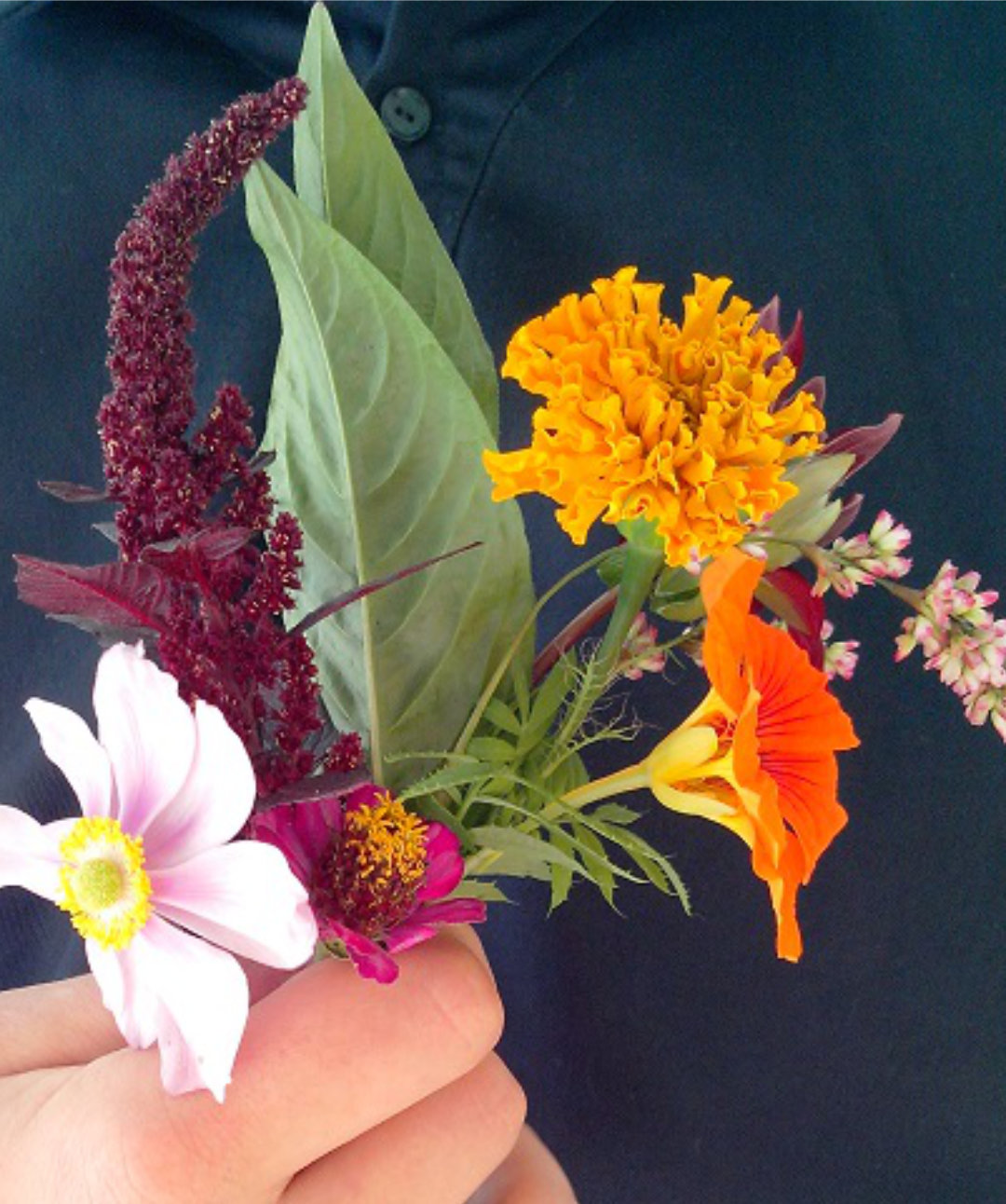Colour has always been a huge fascination and endless inspiration for me, so, when I discovered the ultimate beauty of natural colour in plants, everything fell into place. I started collecting plants, that grow all around me, on the sidewalk, on the side of the street, on trips to the countryside with my bicycle.
First dye experiments were with elderberries (Sambucus nigra) and Canadian goldenrod (Solidago canadensis), still one of my favourites! Simmering Canadian goldenrod releases a beautiful greenish yellow and a wonderful smell, it’s also a herbal tea and treatment. Understanding the plants for their colour, biochemical and healing properties is the focal point.
During the whole process of growing and collecting plants for dyeing, I feel deeply connected to the nature around me! Growing and harvesting dye plants has its own pace, its own schedule, my influence is limited. Gathering plants and information about them, tuning in and watching very closely, the miracle is in the details!
Do I create the colour, is the colour already there? Most certainly I am the connection between the plant and the textile fibre, working with my hands and all of my senses!
The colours are "produced" by nature, sometimes obvious, sometimes hidden in the leaves, the flowers, the berries, the roots. I am helping to transfer these beautiful colours on to natural materials like wool, silk, cotton, and linen.
POKEBERRY (Amerikanische Kermesbeere) Phytolacca americana
Pokeberry is a herbaceous perennial plant, native e.g. to the south of the United States, where under good conditions it can grow up to 3 metres tall and is often referred to as a weed or invasive plant. All parts of the plant can be toxic to humans, nevertheless it has been used in folk medicine and is still eaten today traditionally by many Americans, who grew up with it. The young sprouts and leaves can be prepared, but must be cooked several times, following a strict recipe: "Polk sallet" (sallet is an old word for cooked greens). The berries are known as a good food source for songbirds, but should never be eaten by humans and mammals. "Polk salad (sallet) Annie" is a song from 1969 by Tony Joe white, which was also covered by Elvis Presley, describing a poor young woman’s life in Louisiana!
-
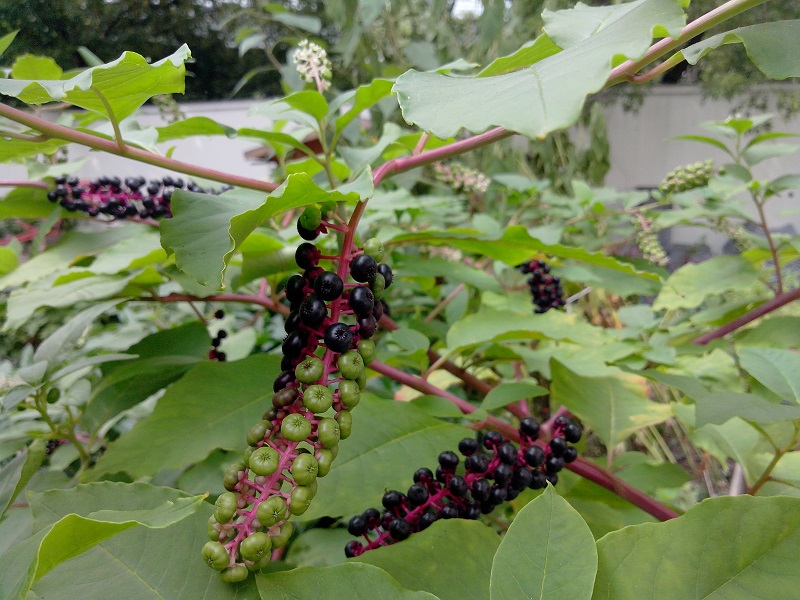
Pokeberries © Julia Kunz -
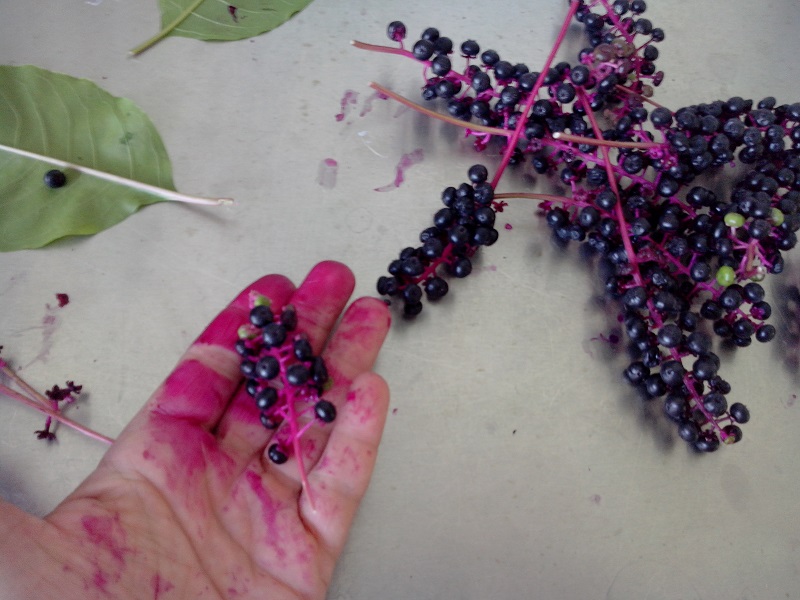
Ink from Pokeberries was used for writing and there are non-confirmed rumours, that the original U.S. constitution was written in Pokeberry ink. The berries were also a common household dye for textiles and leather, frequently used by native Americans, but not very stable and quite fugitive, so dyed textiles had to be overdyed on a regular basis. Pokeberries give wonderful red, pink, purple and fuchsia hues, very much alike the carmine red dye from cochenille lice. I grow Pokeberry for several years now (https://design.udk-berlin.de/2014/12/hofgruen/).
Currently I am working on a research project on how to stabilize the pokeberry dye, enhance the lightfastness and wash fastness, experimenting with different mordants and afterbaths on a variety of organic textiles like, cotton, wool, and silk.
-
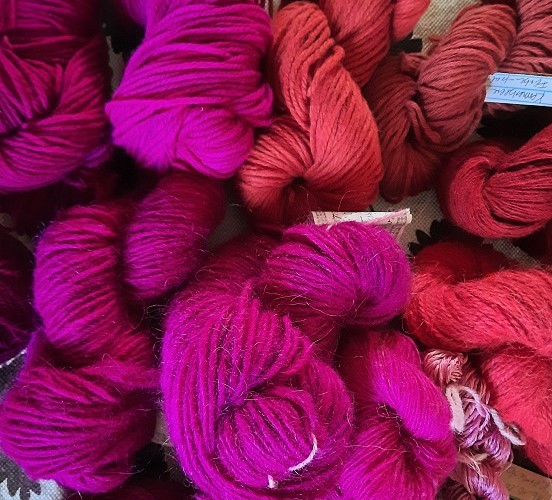
Pokeberry yarns © Julia Kunz -
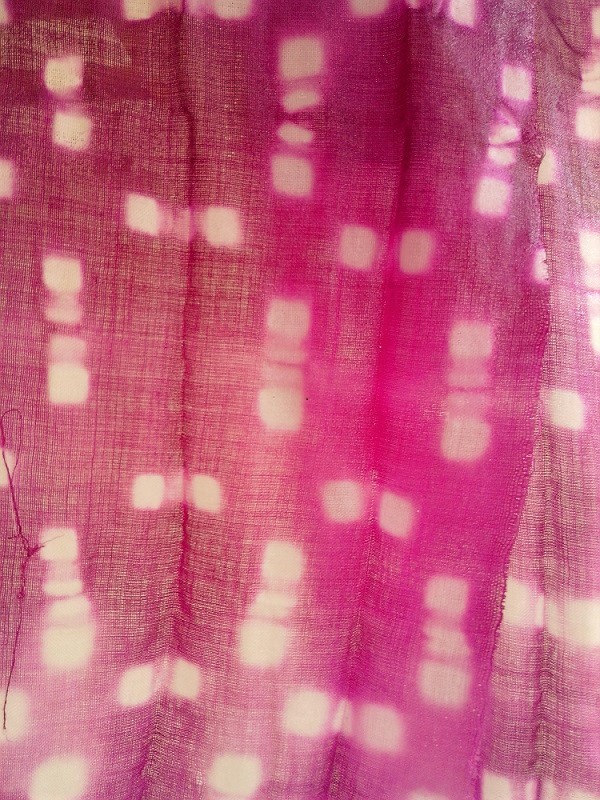
Pokeberry Scarf © Julia Kunz
Textile things is a designer/ maker studio based in Berlin with a focus on natural dyes, run by dipl.textile designer Julia Kunz. Working with plants that she grows specifically for dyeing and gathering dyeplants that grow locally, is of greatest importance. Her approach is artistic and holistic, taking in account the aspects of sustainability, the plant s signature and research of biochemical and healing properties. Apart from her own work Julia is a lecturer and runs the textile screenprintworkhop and dyelab at the University of the Arts (Universität der Künste), Berlin.
